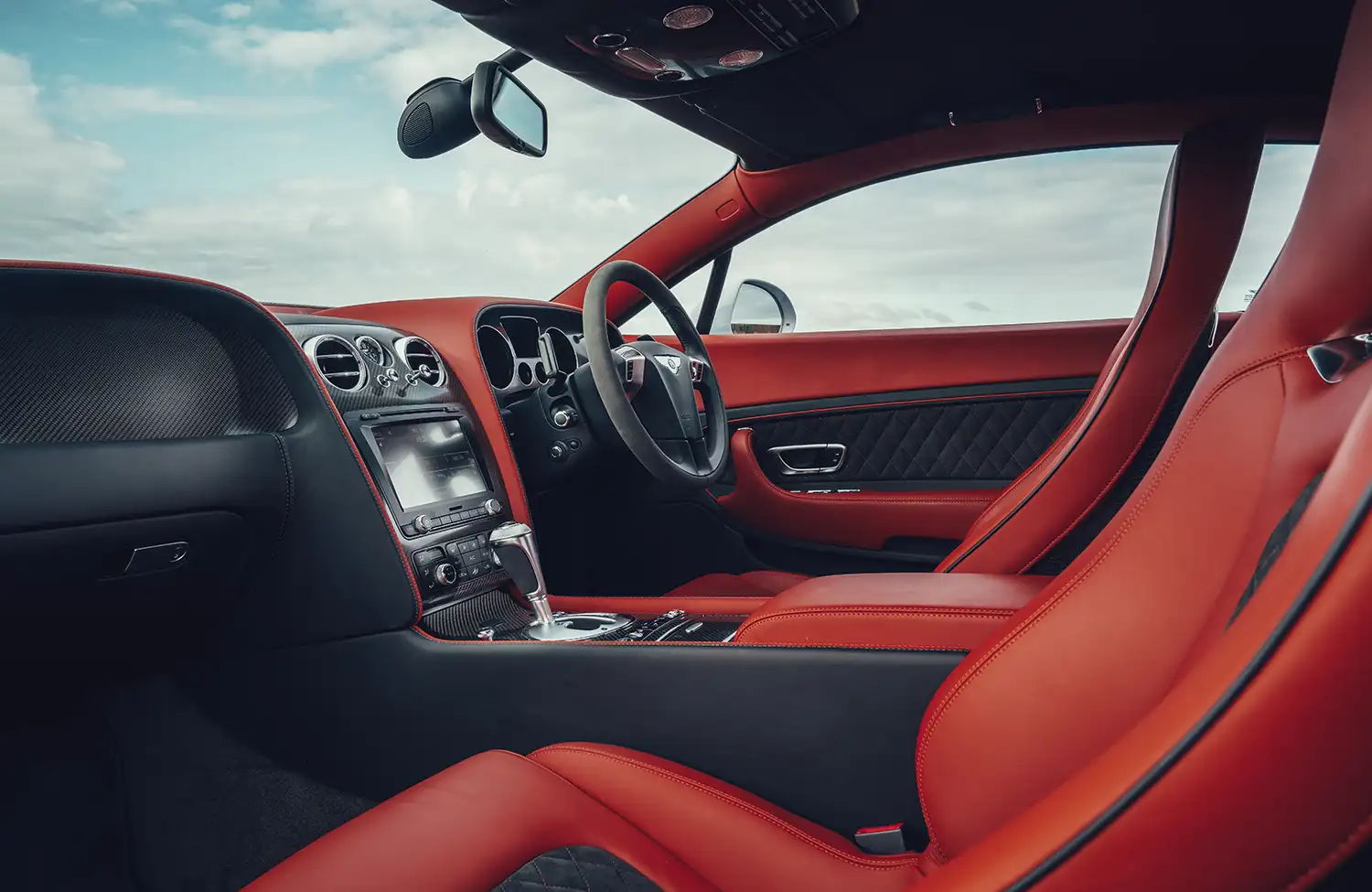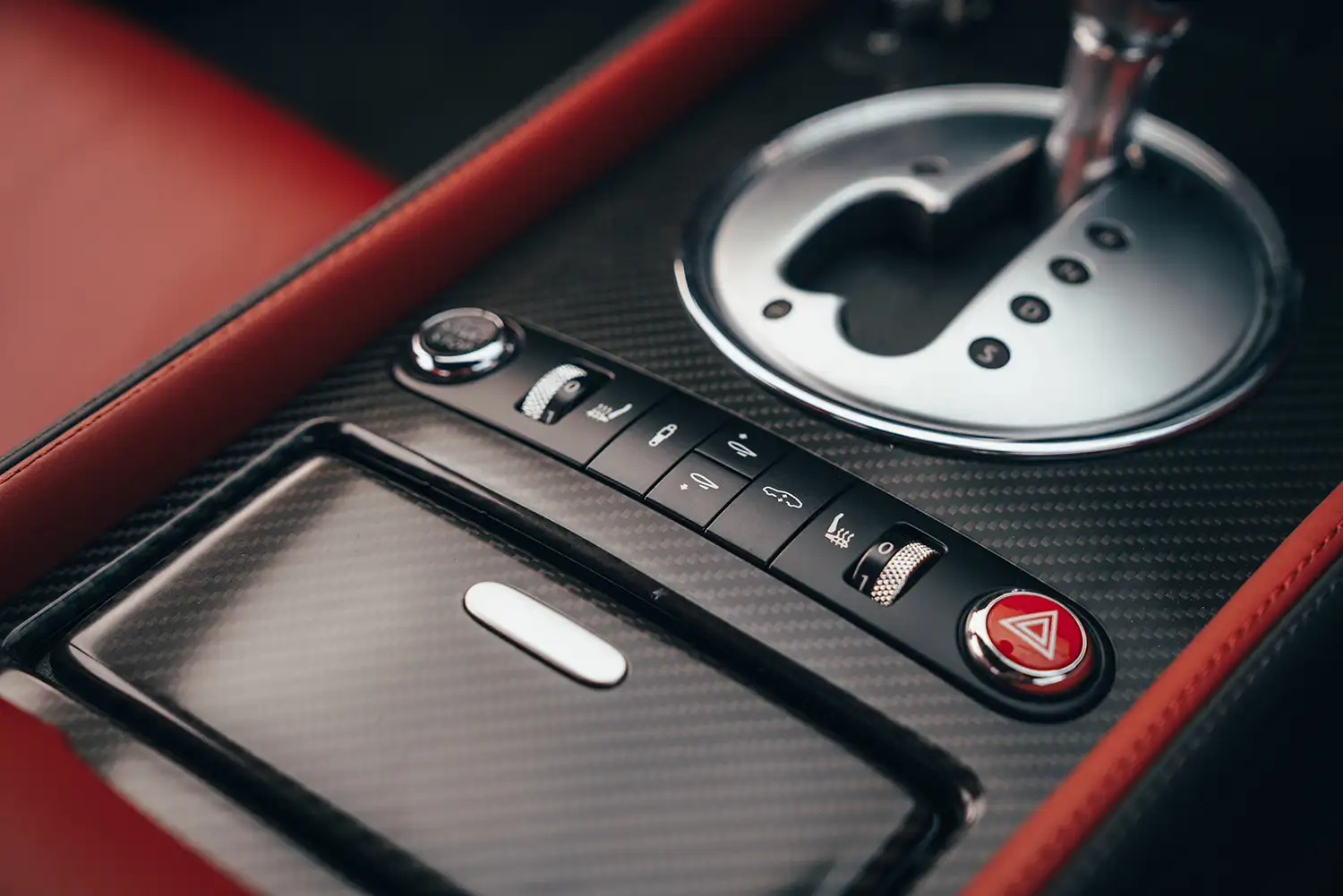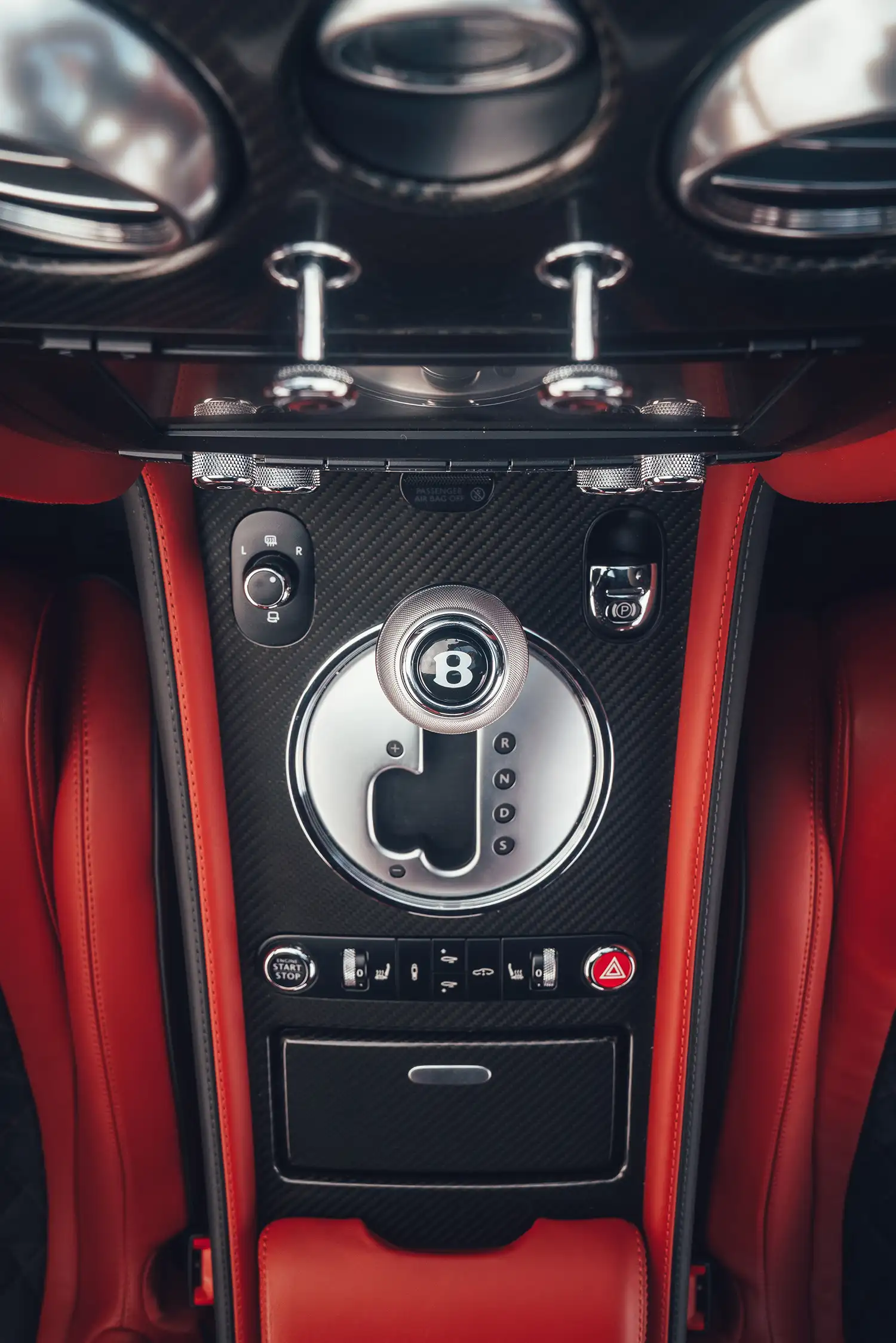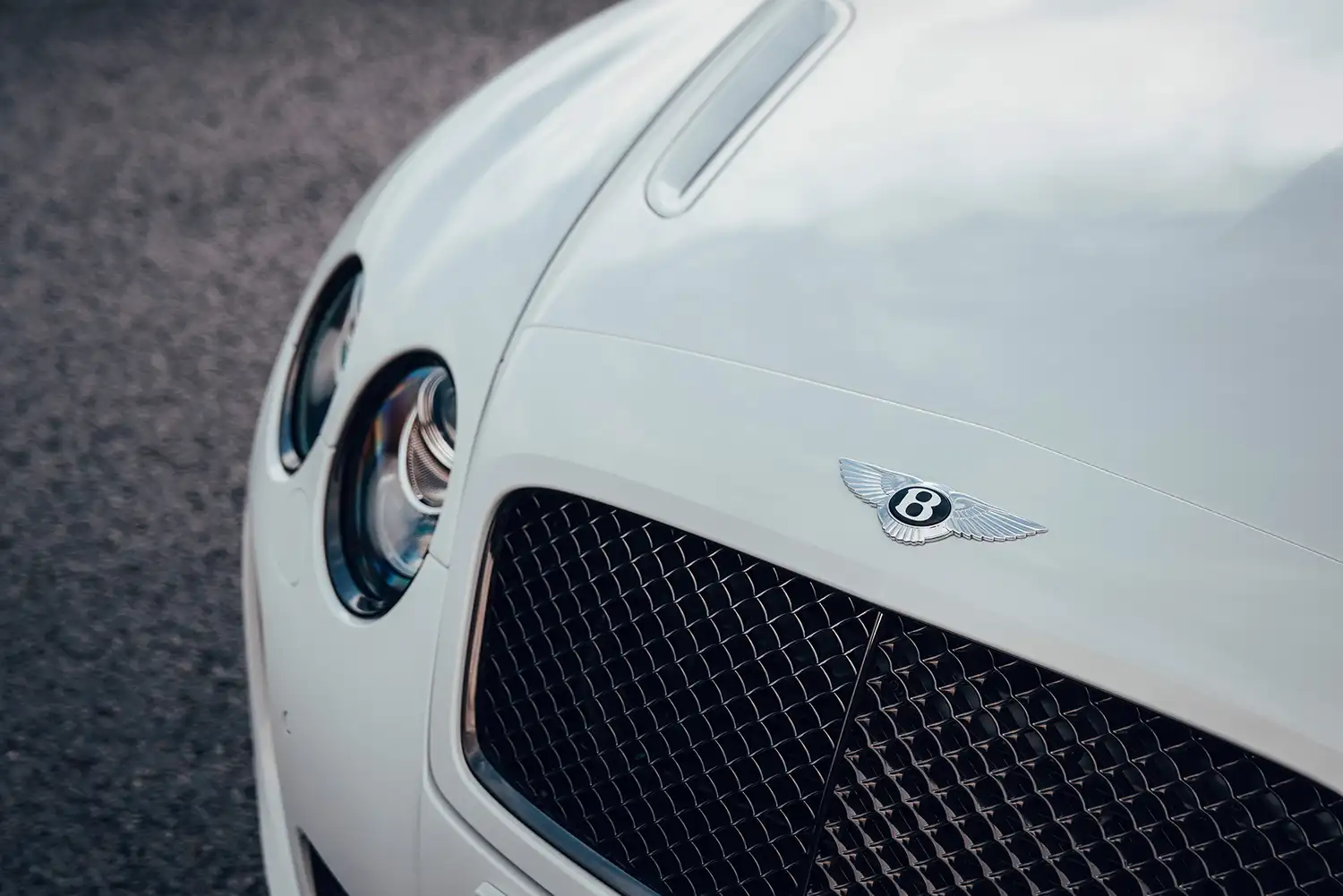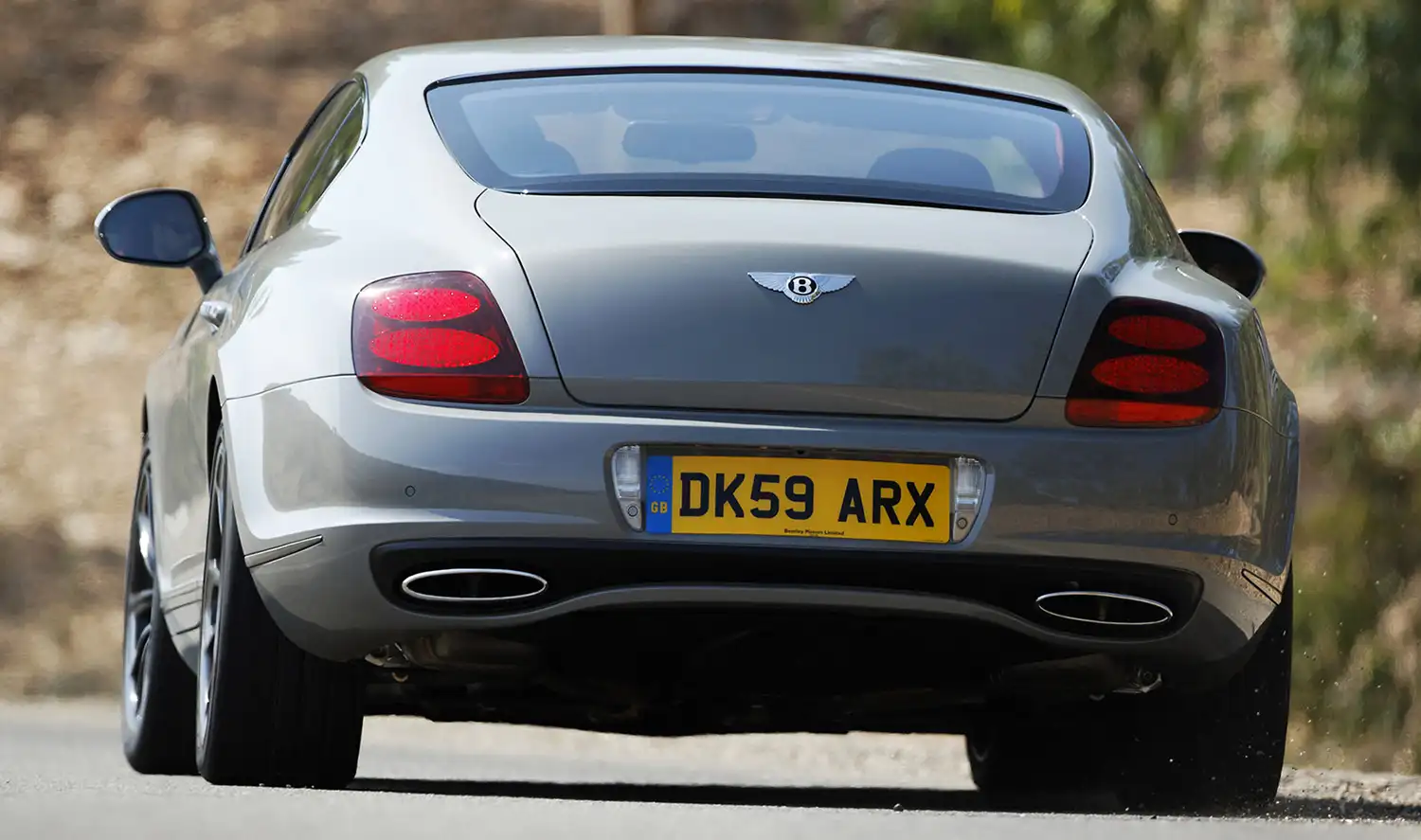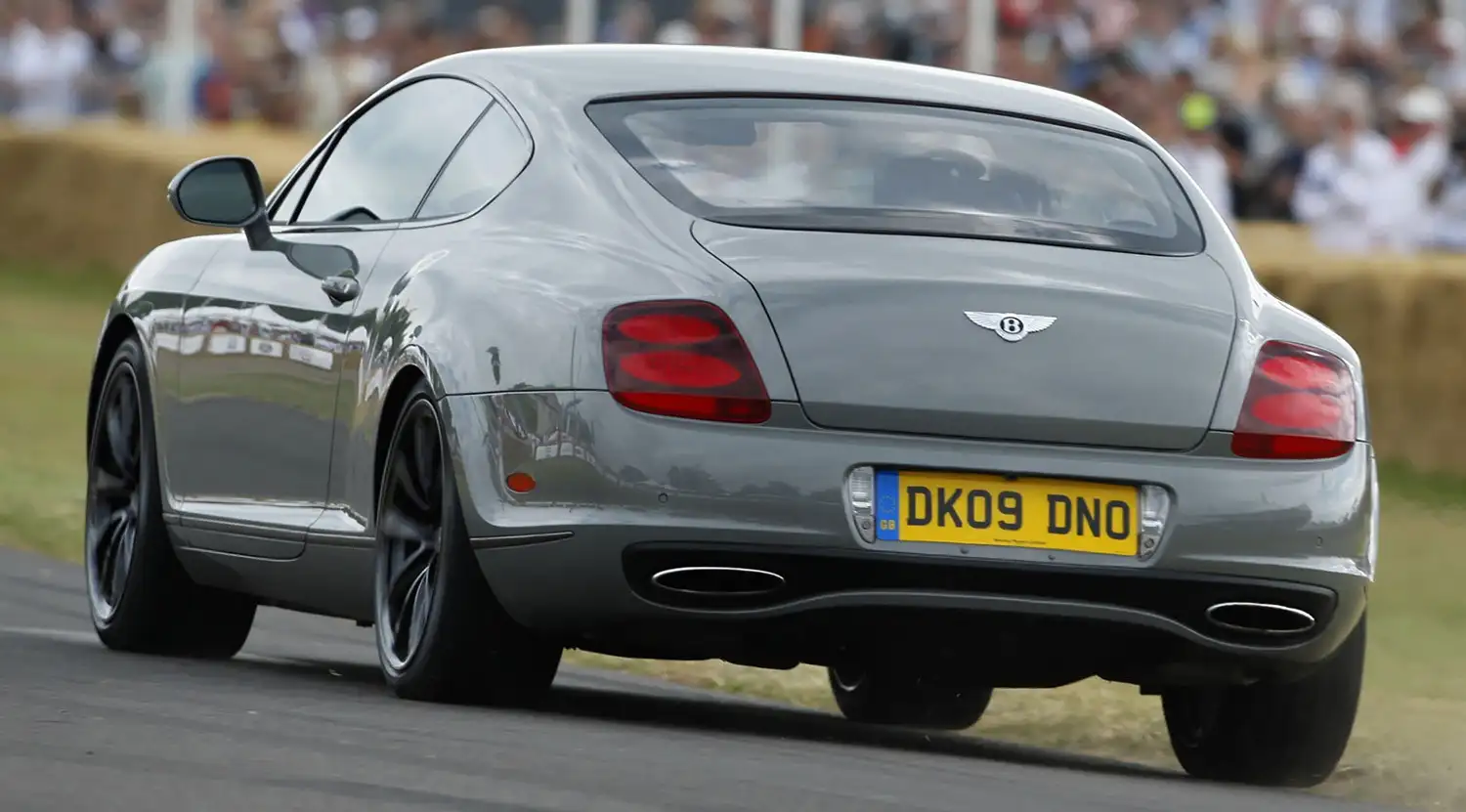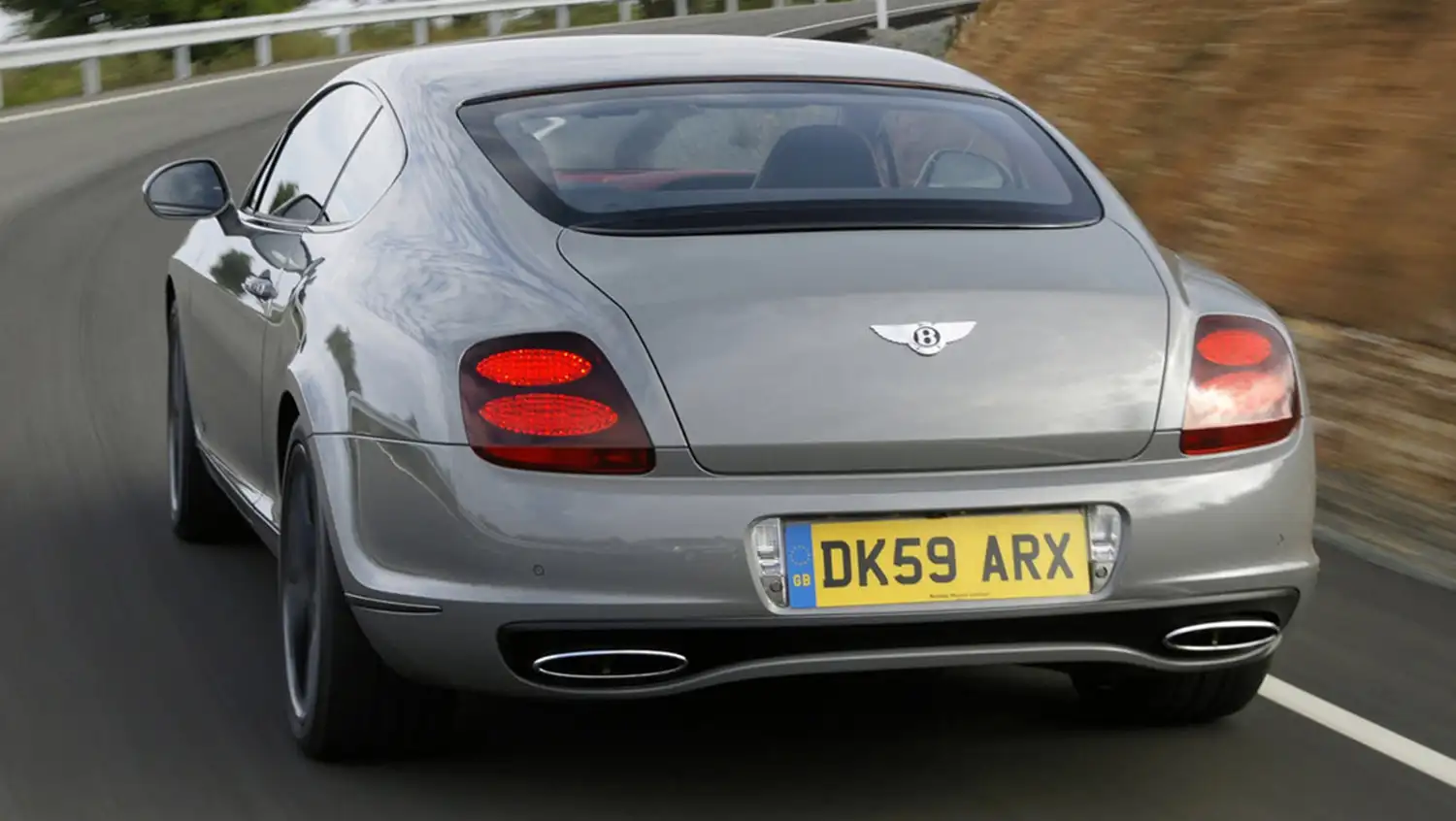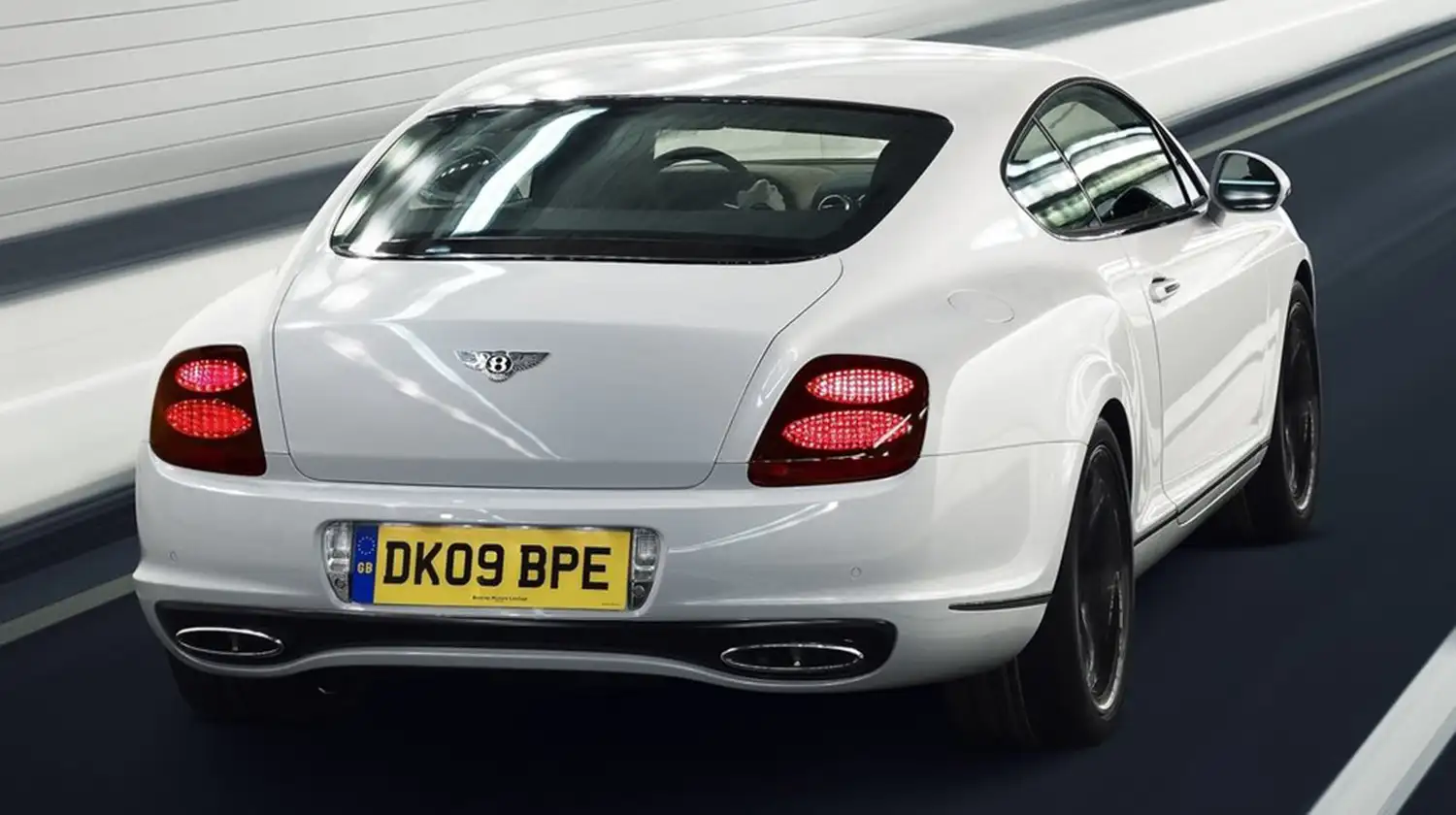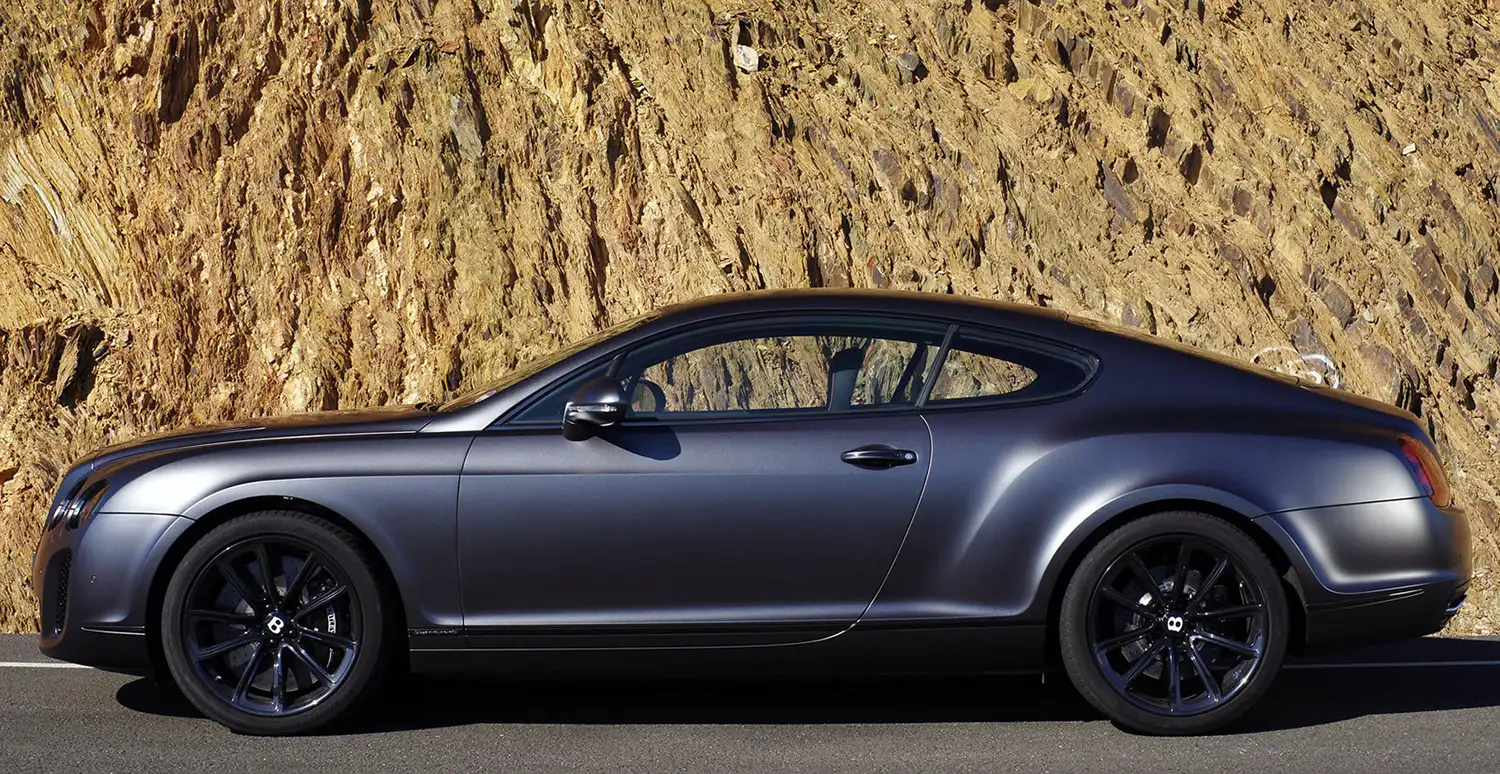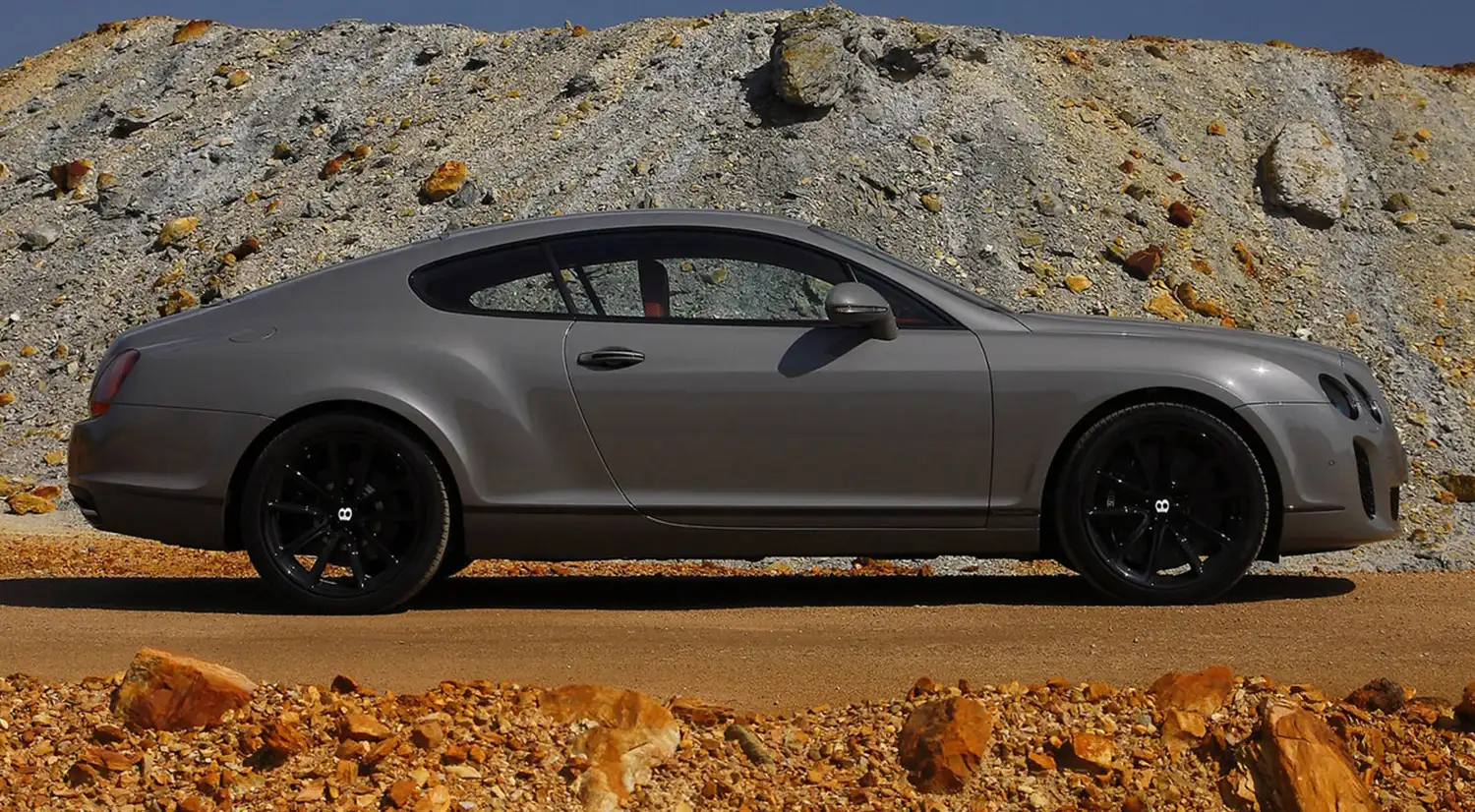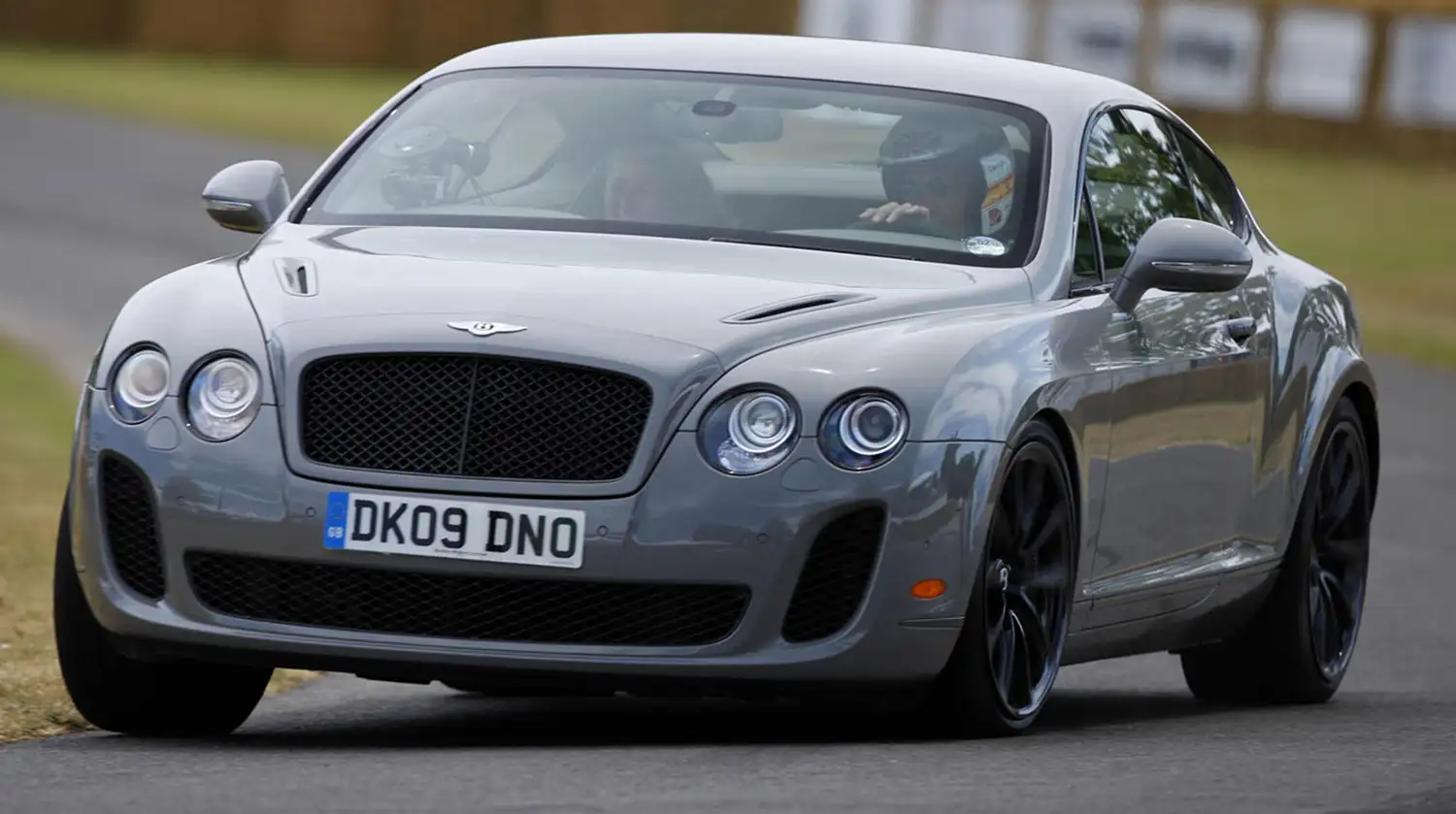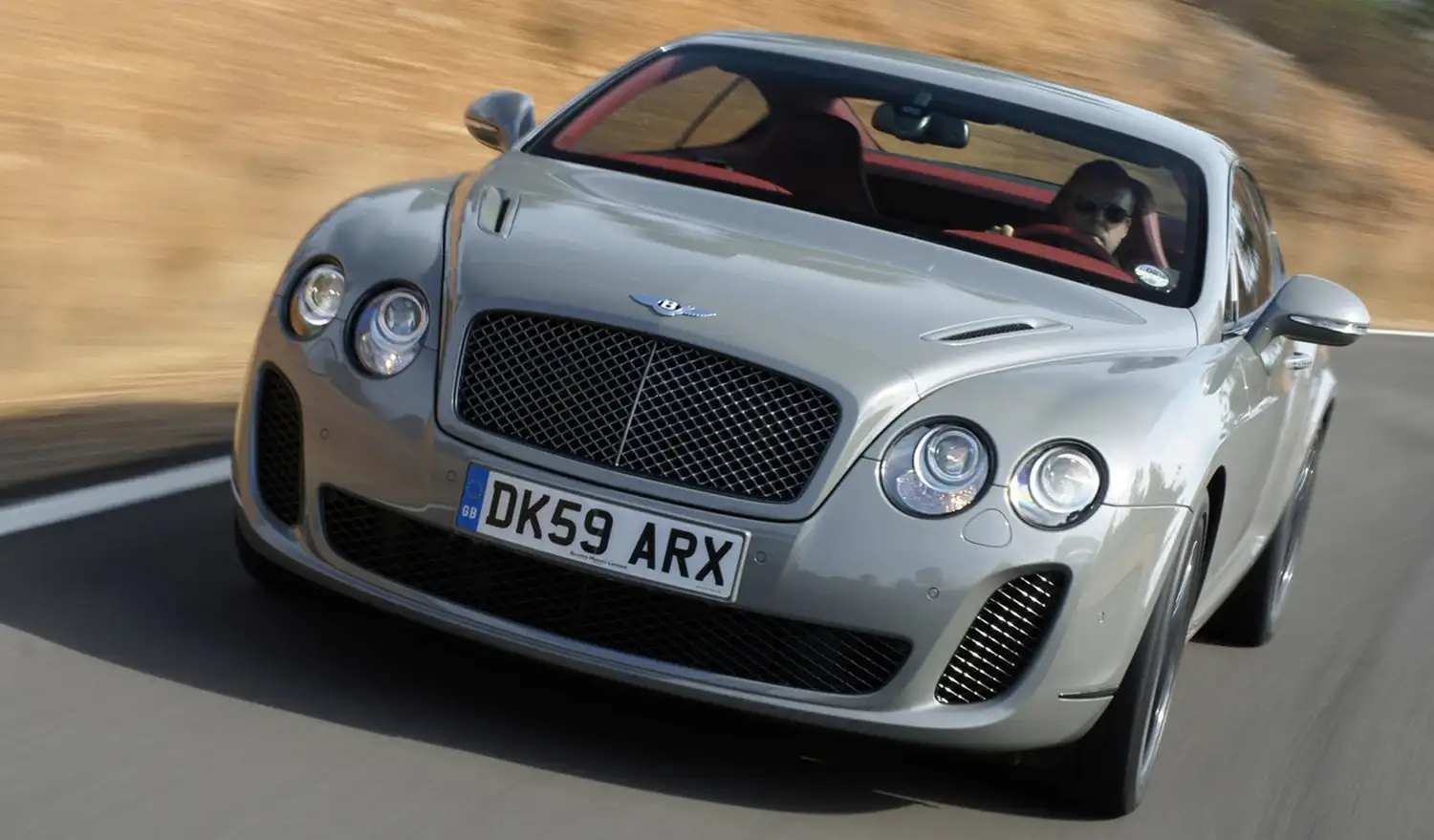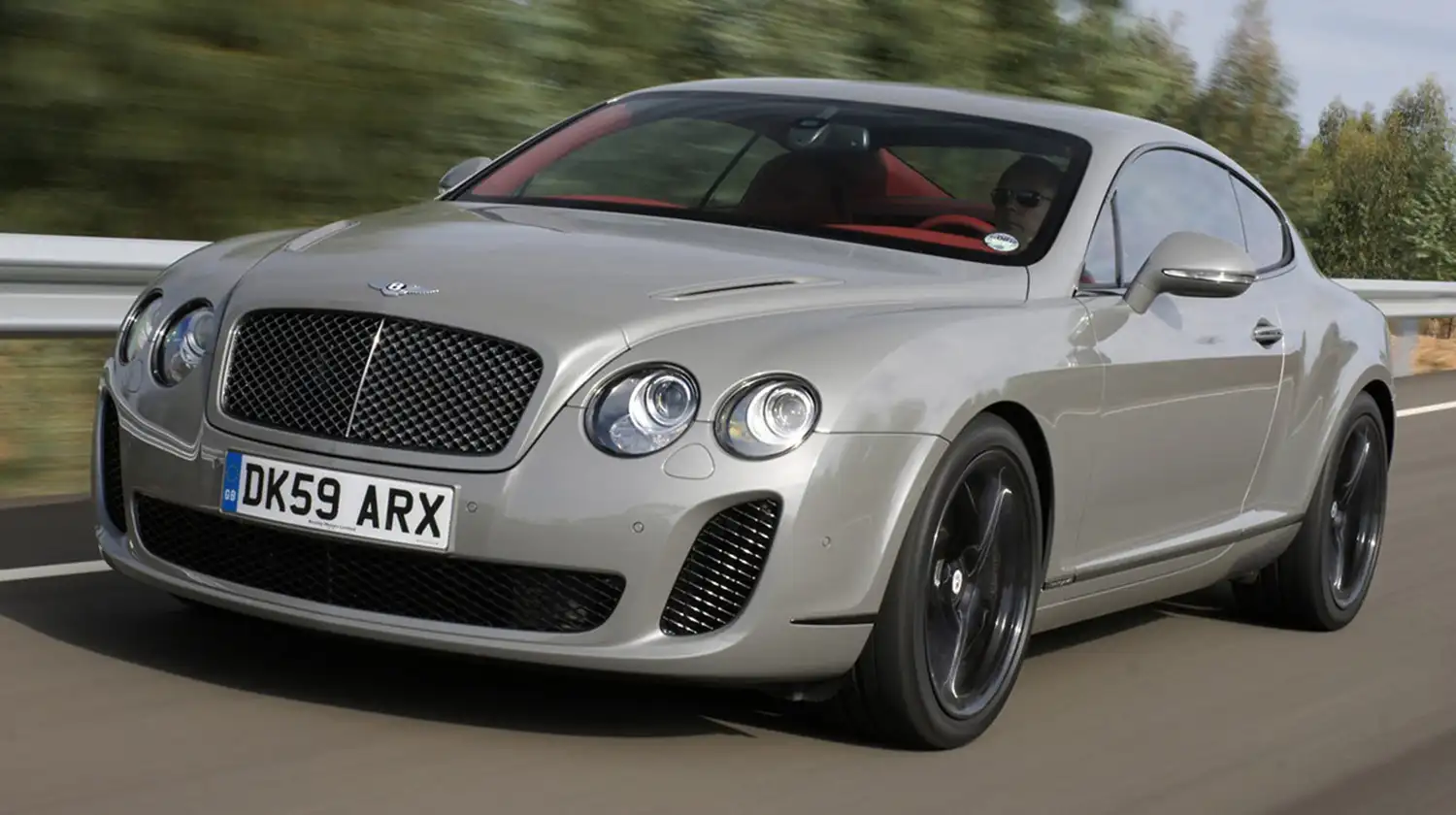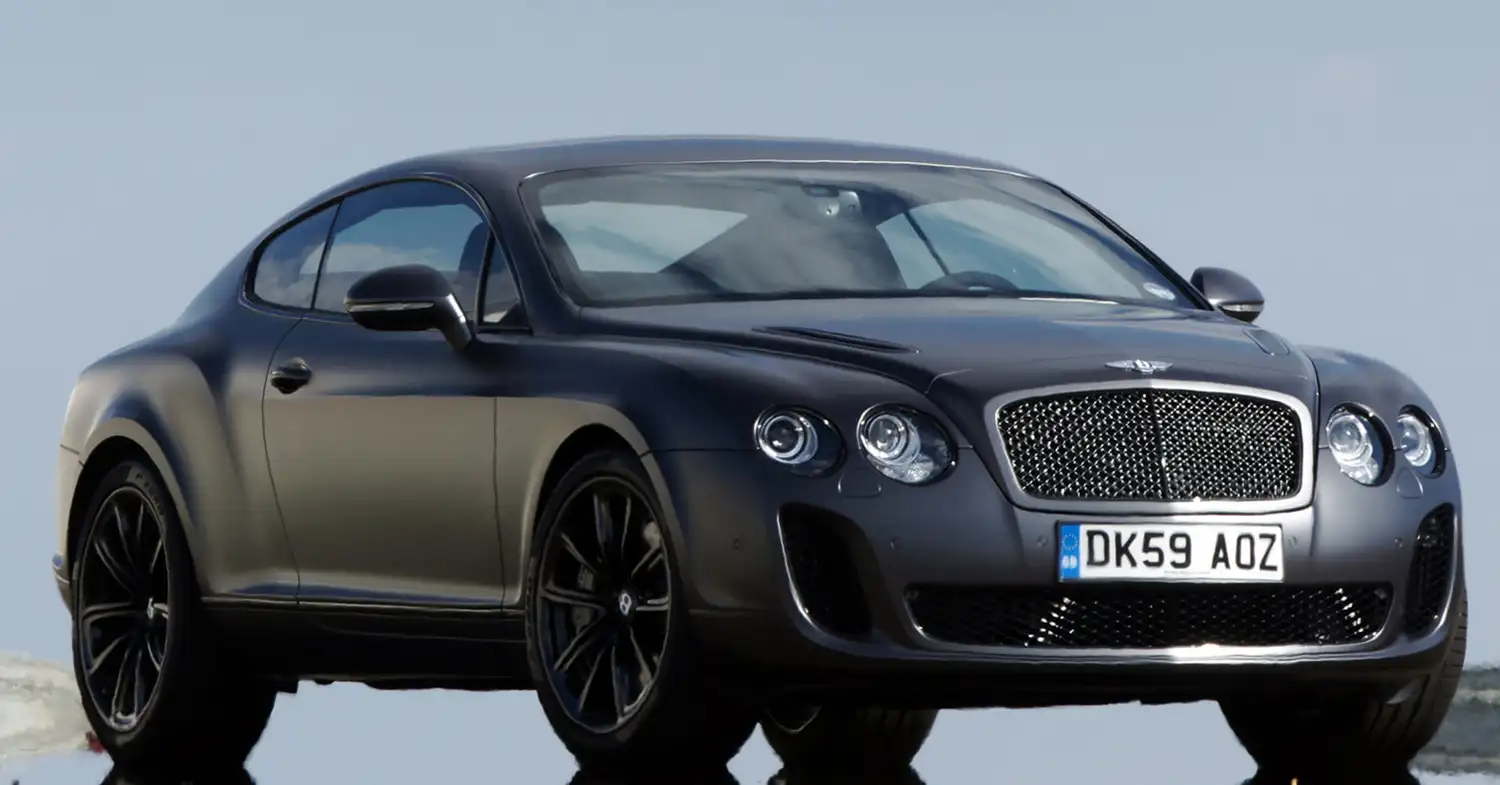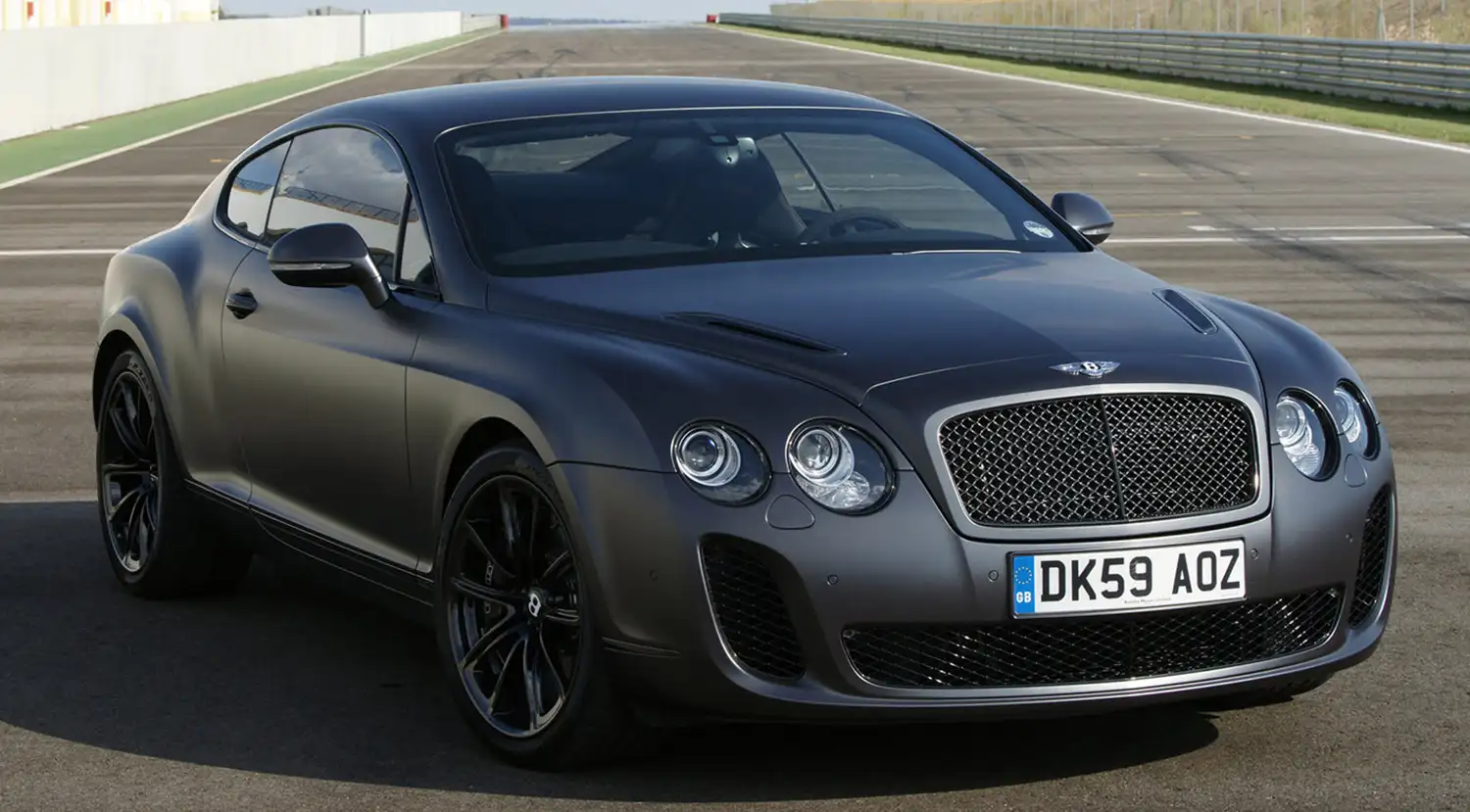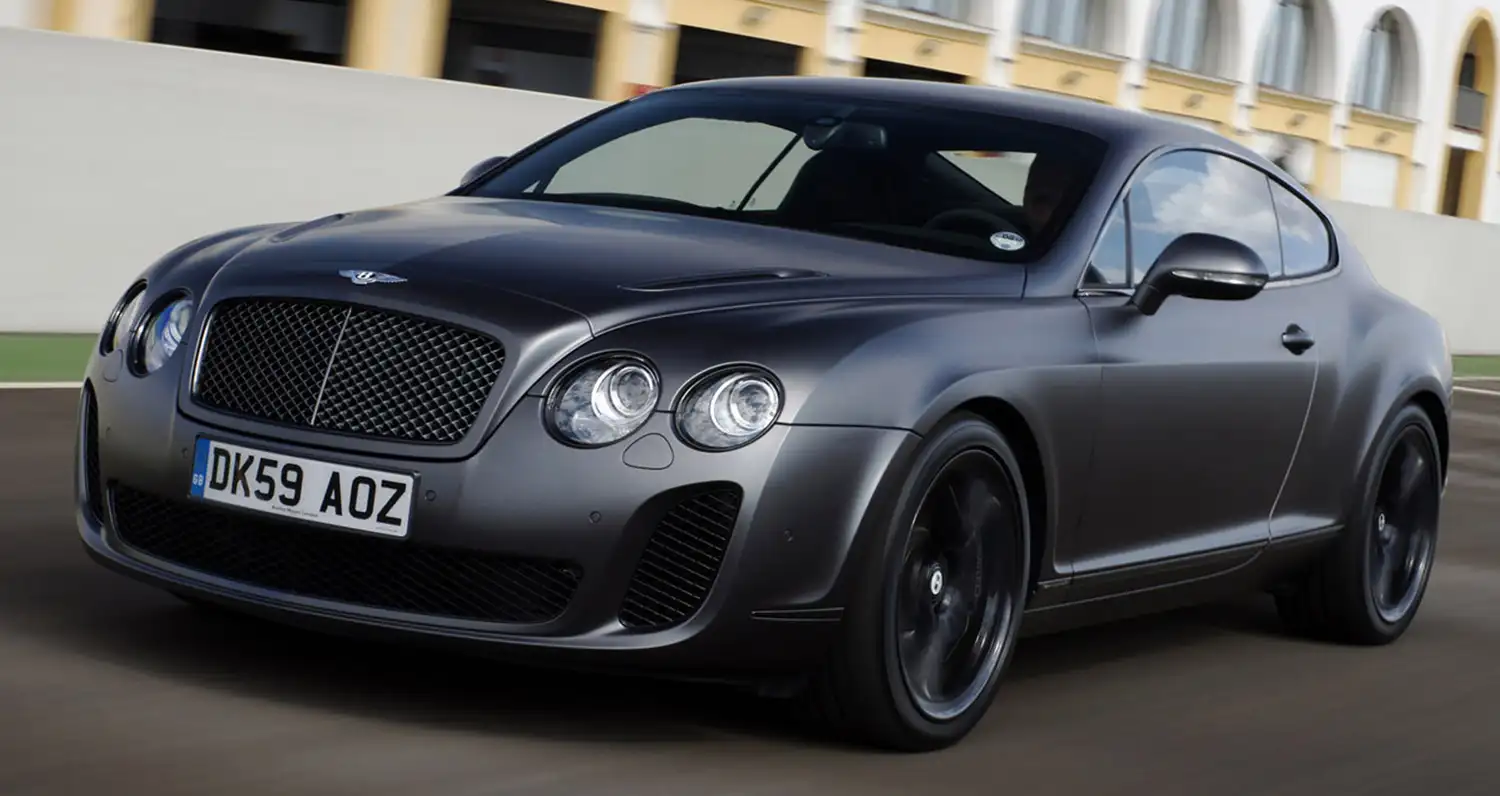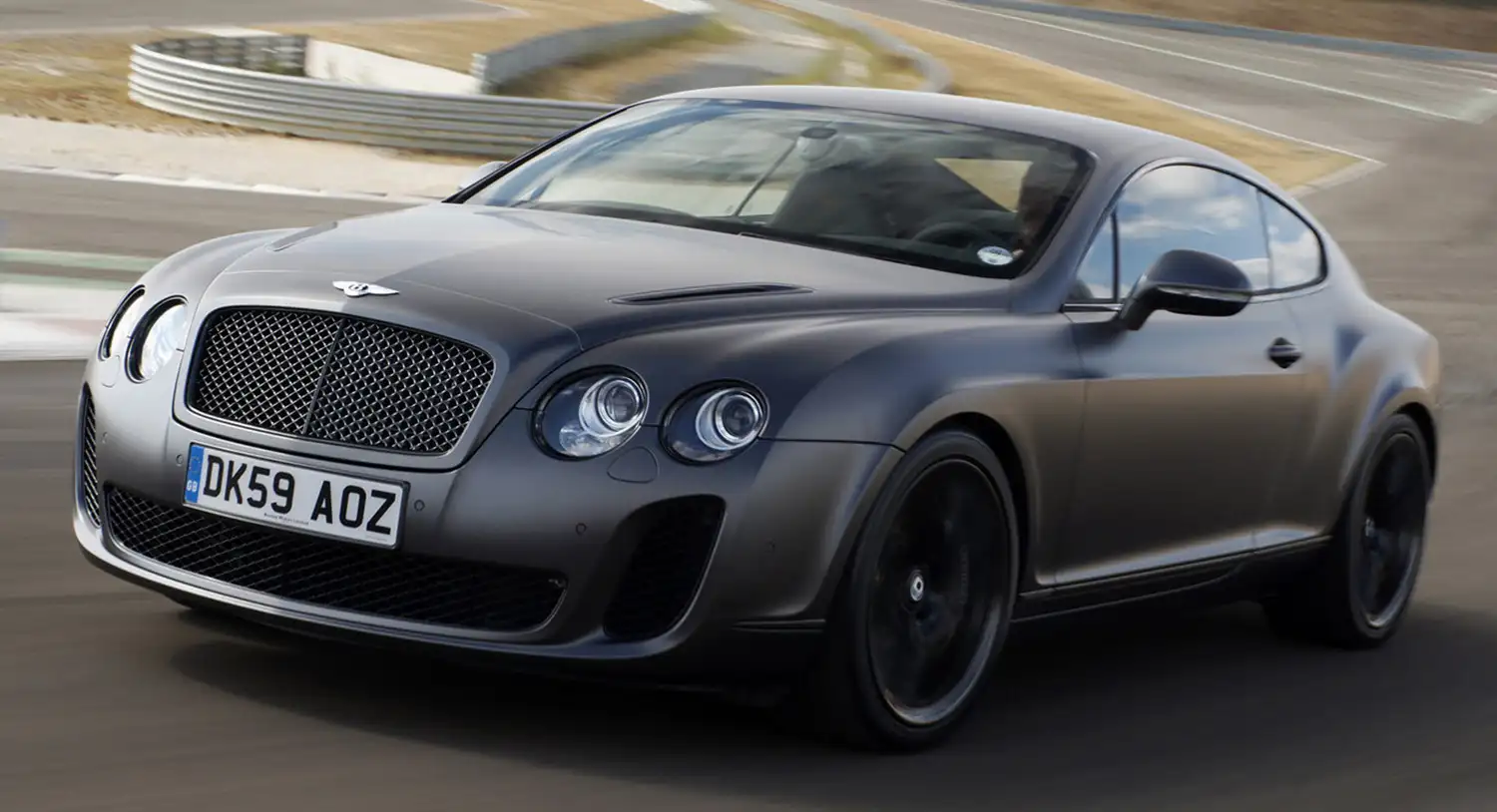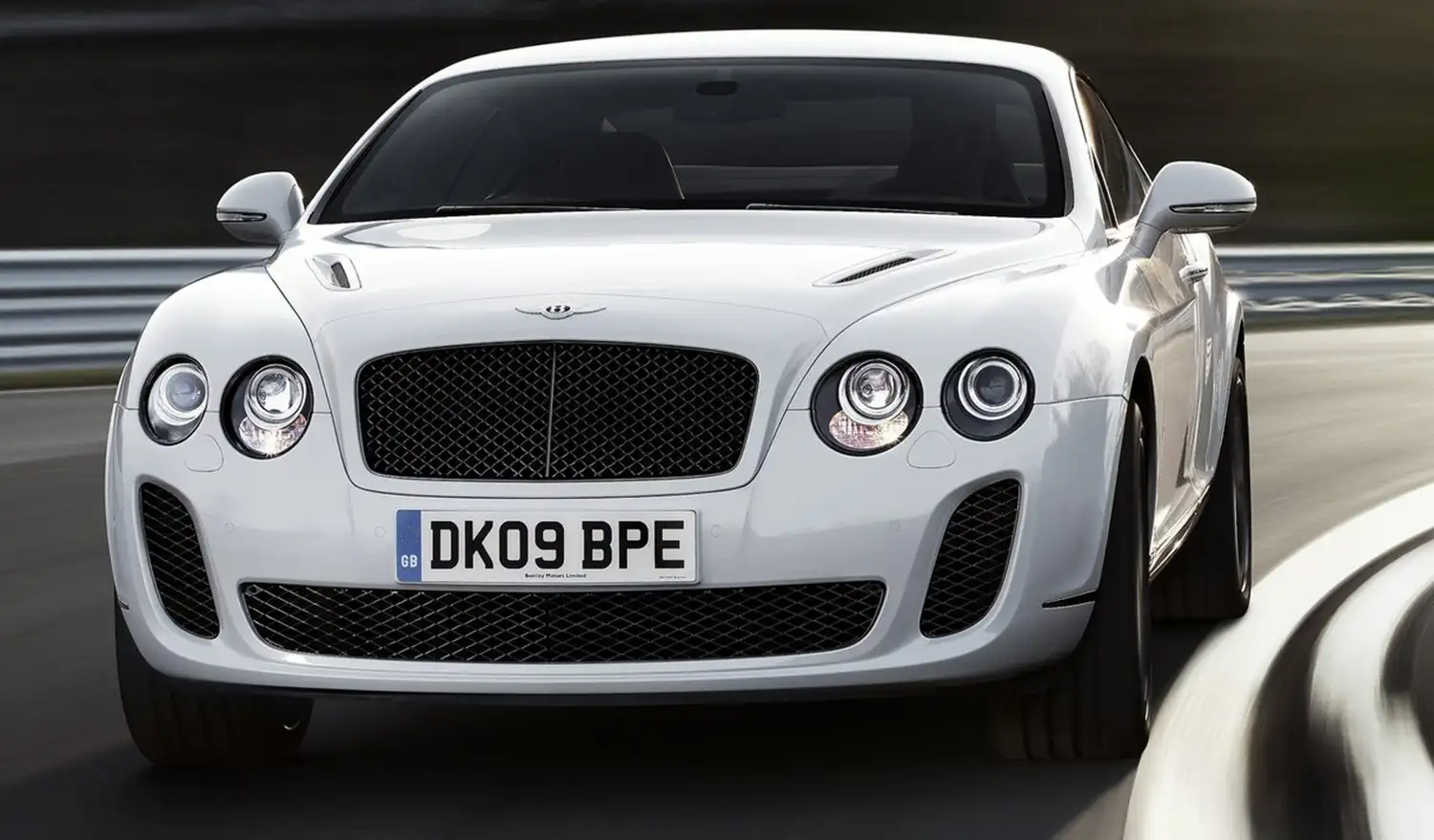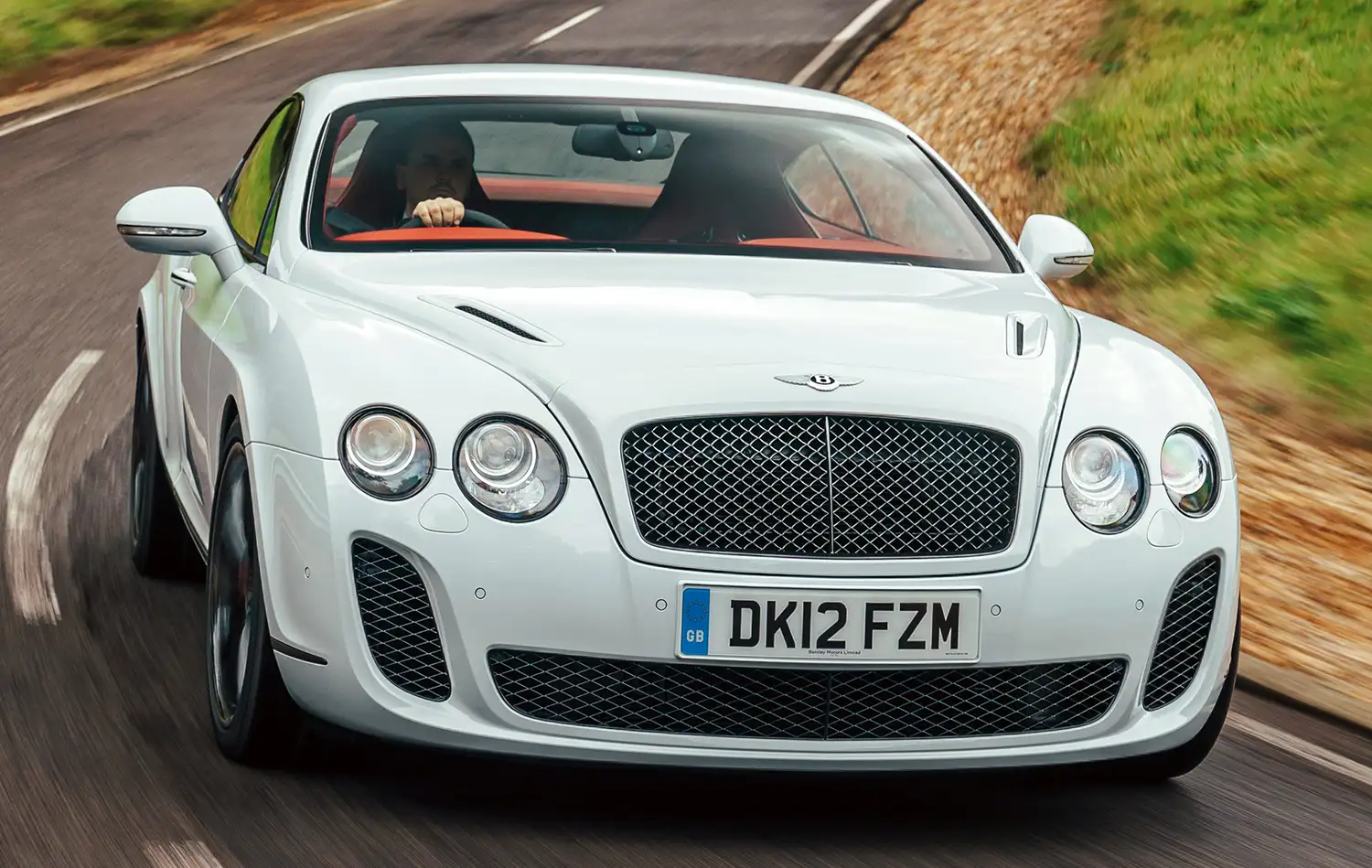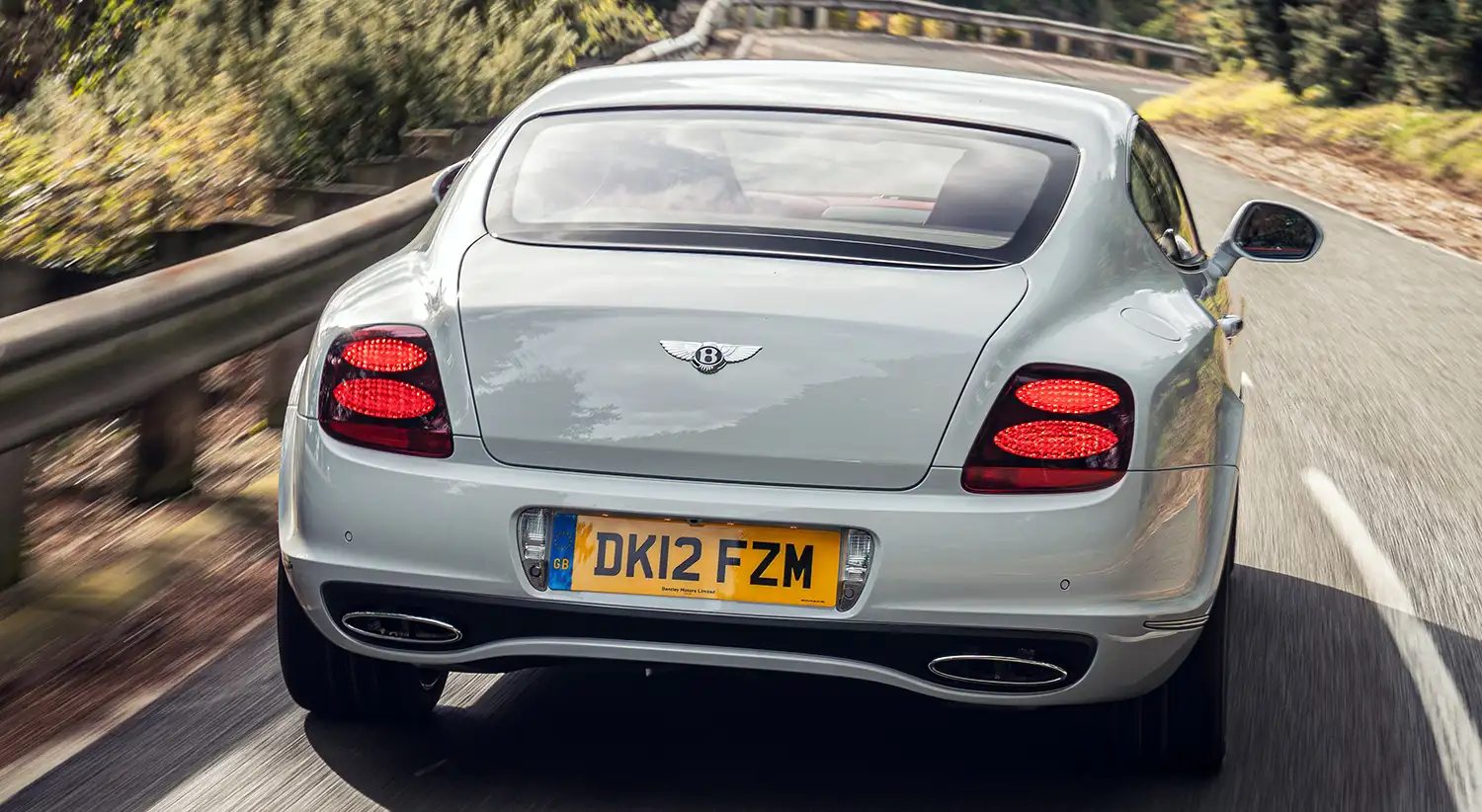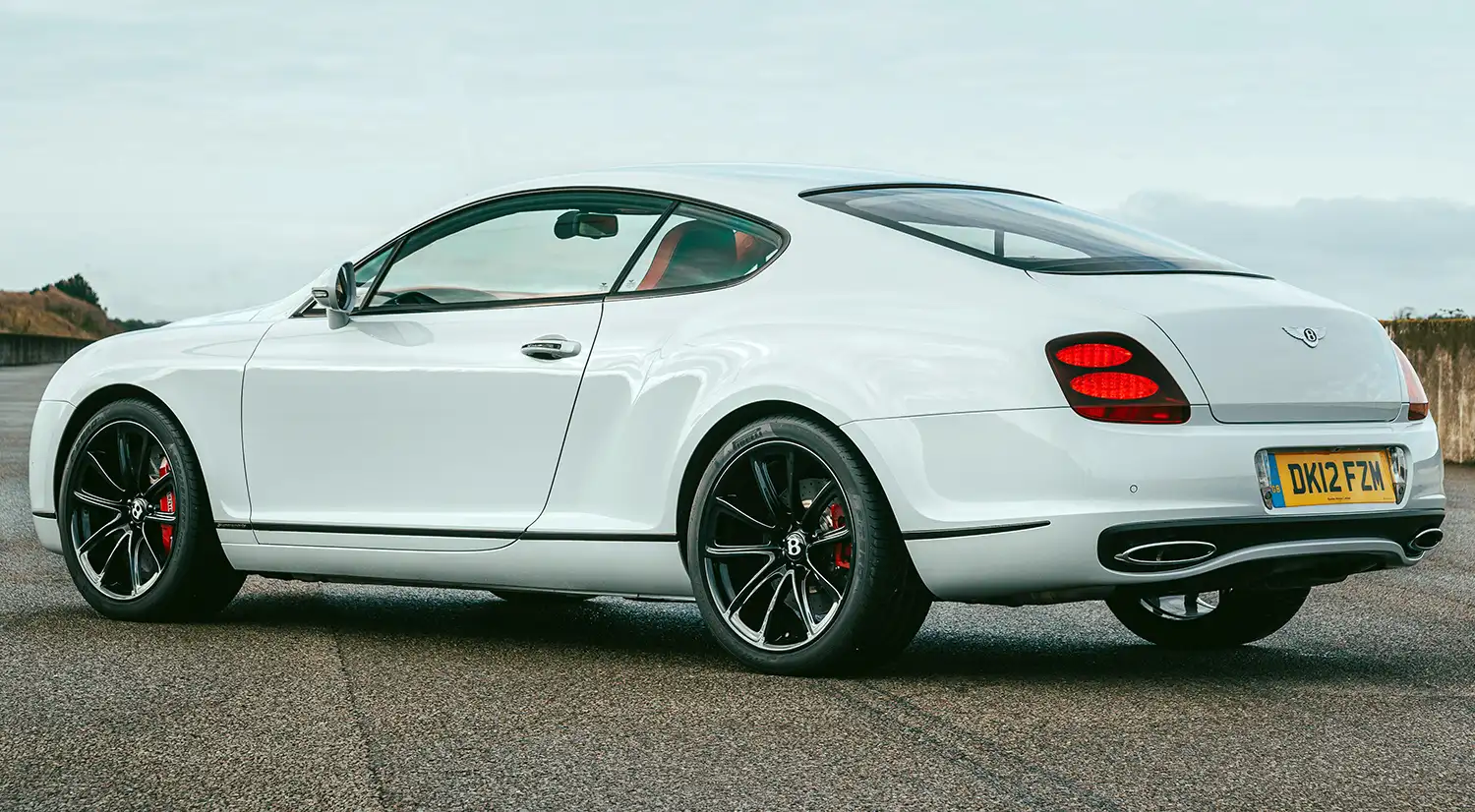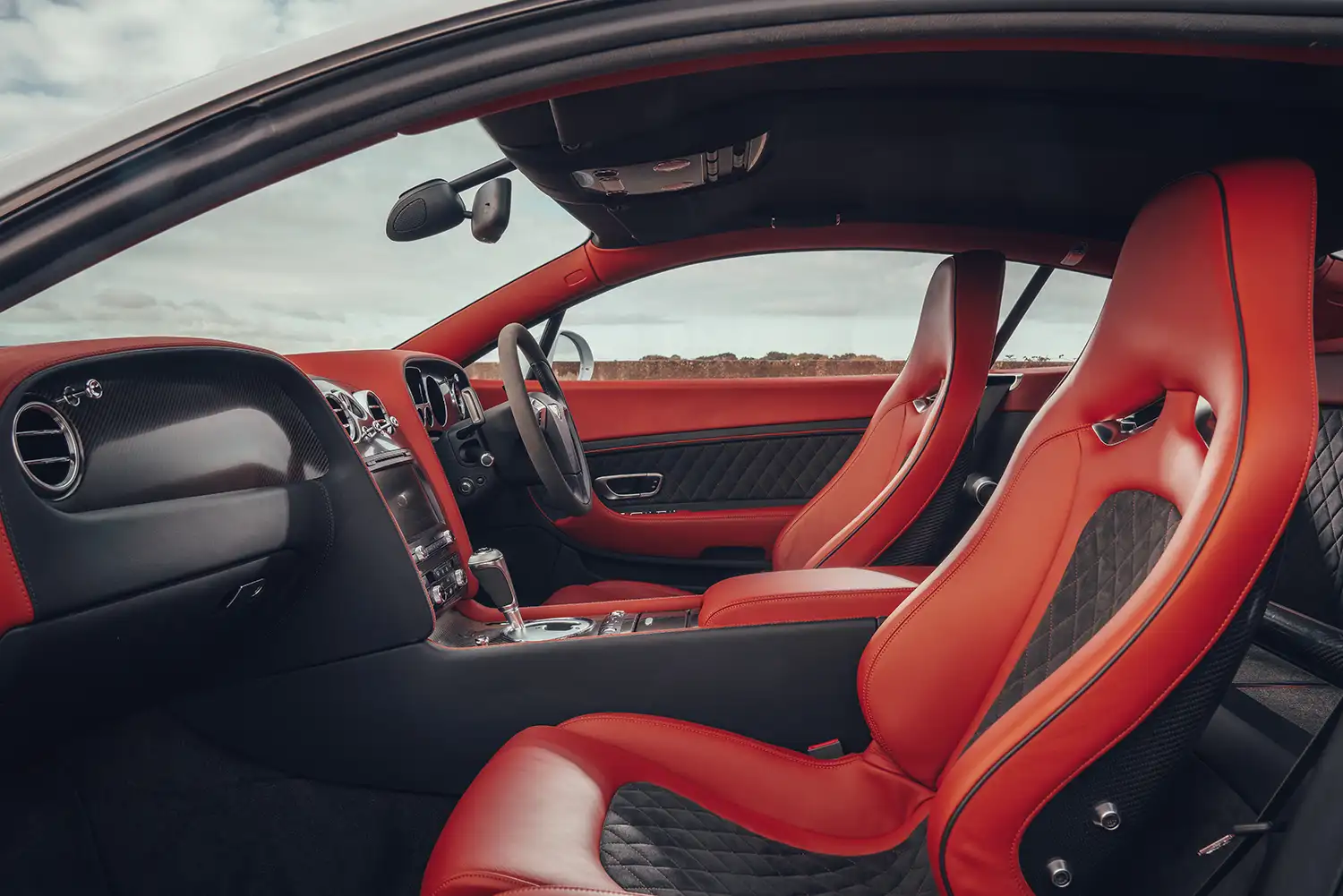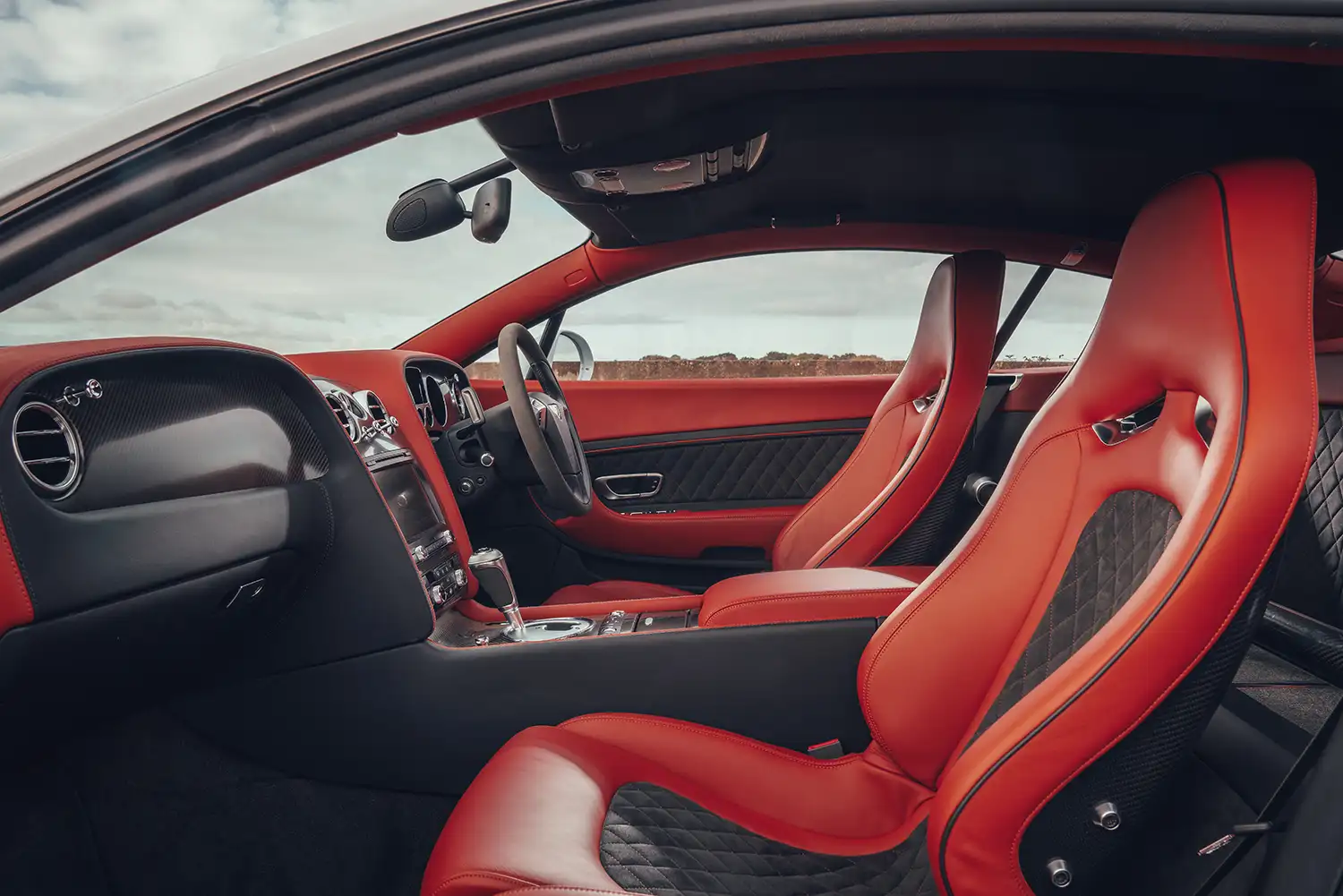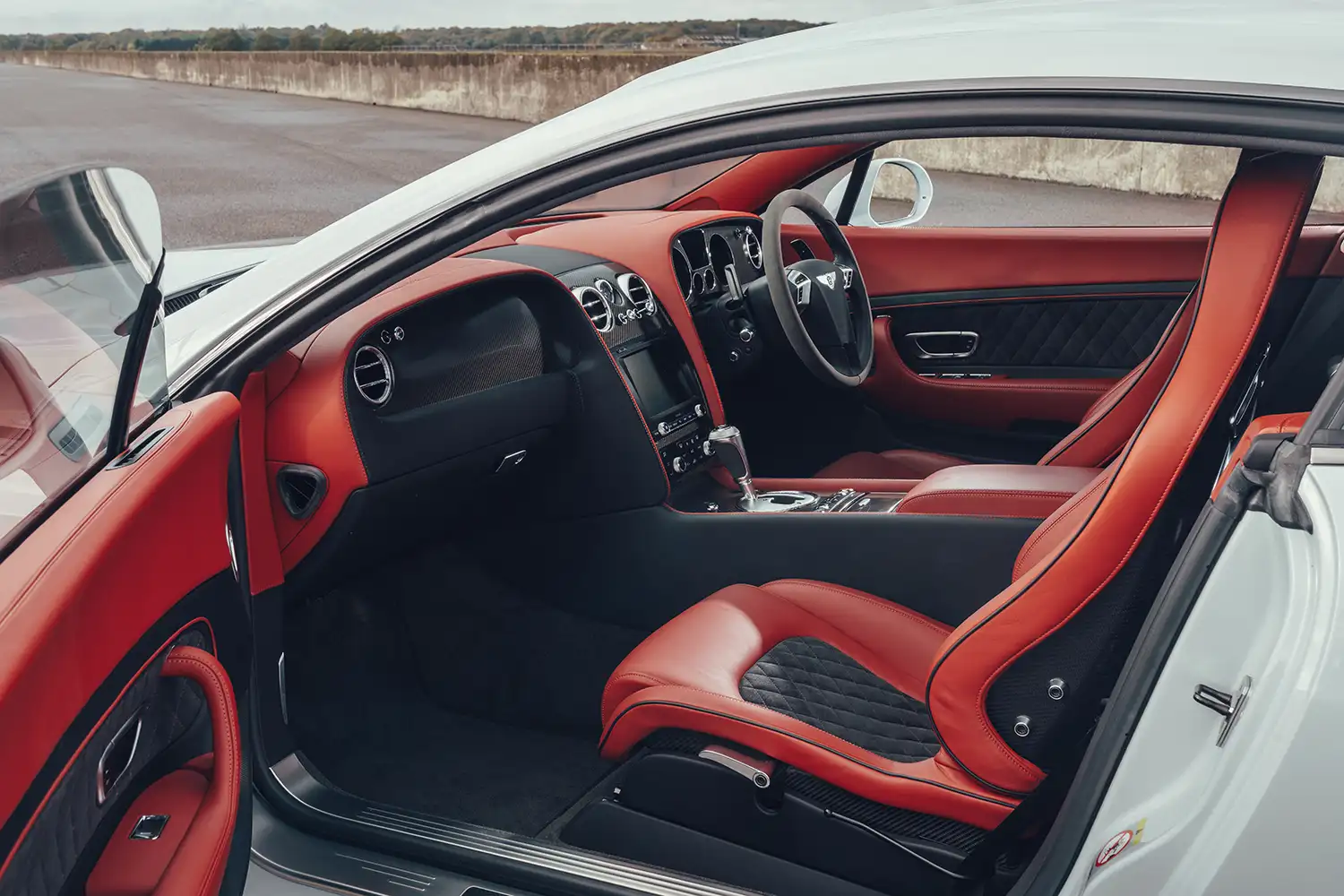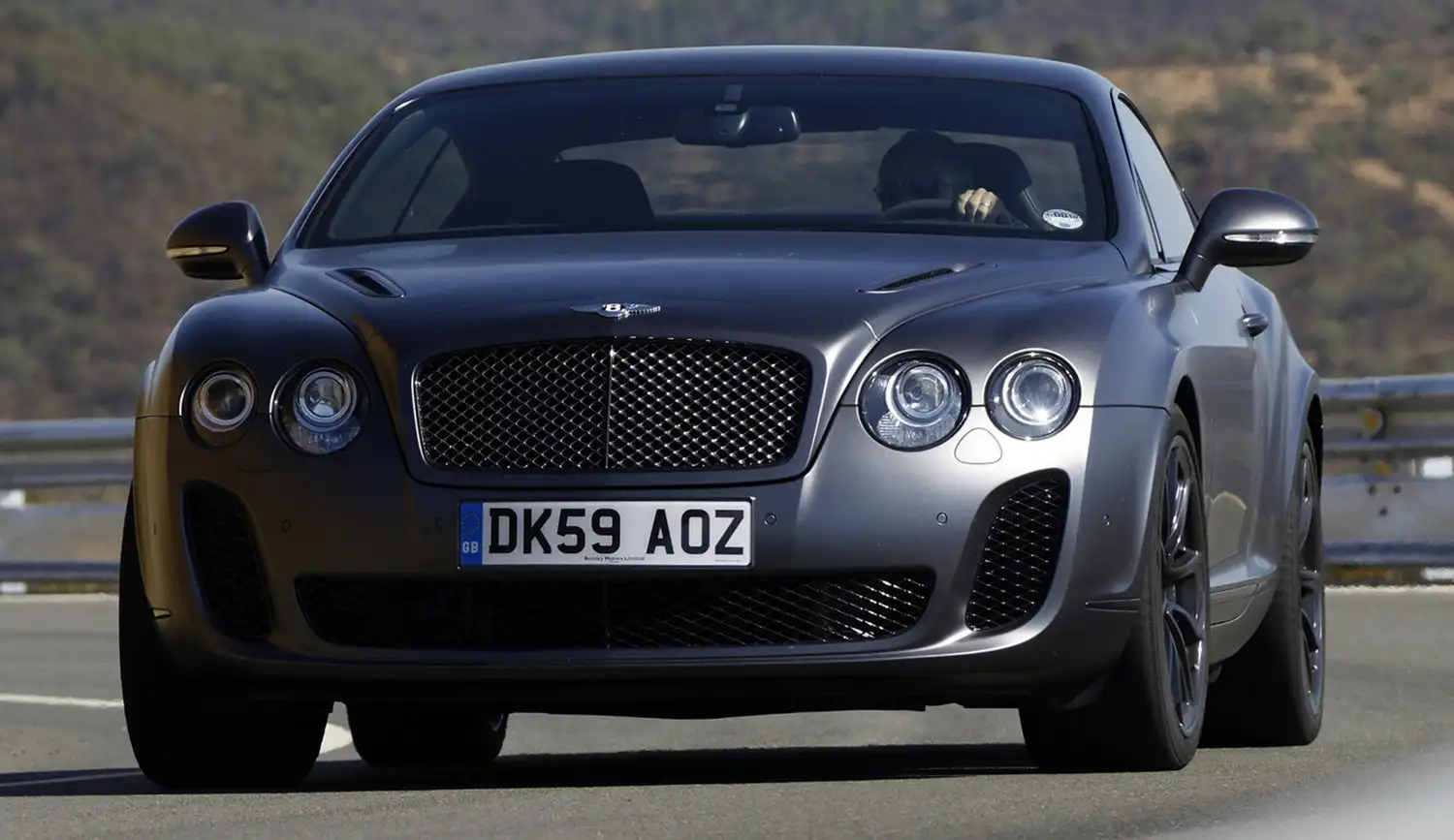
In 1925 W.O. Bentley created a limited run, highly tuned Bentley 3 Litre called the Supersports, following the success of his Speed model in 1923. More than eight decades later the company revived both names with the first-generation Continental GT Speed in 2008 and Supersports in 2009.
Development
The Supersports began as an ‘under the radar’ project within Bentley’s Engineering Division, to see what effect reducing the weight of a Continental GT would have on performance. Encouraging initial results persuaded the Board to give it the go-ahead. The new Supersports became the lightest and the most powerful of all first-generation Continental GT models. New alloy wheels, carbon fibre-reinforced Silicon Carbide (CSiC) ceramic disc brakes and a lighter two-seat cockpit with carbon-fibre framed seats saved almost 110 kilograms. A revised engine management system and improved airflow management increased power output to 621bhp. These changes, combined with a new Quickshift transmission, gave a 0-62mph time of just 3.7 seconds, compared with 4.6 Continental GT.
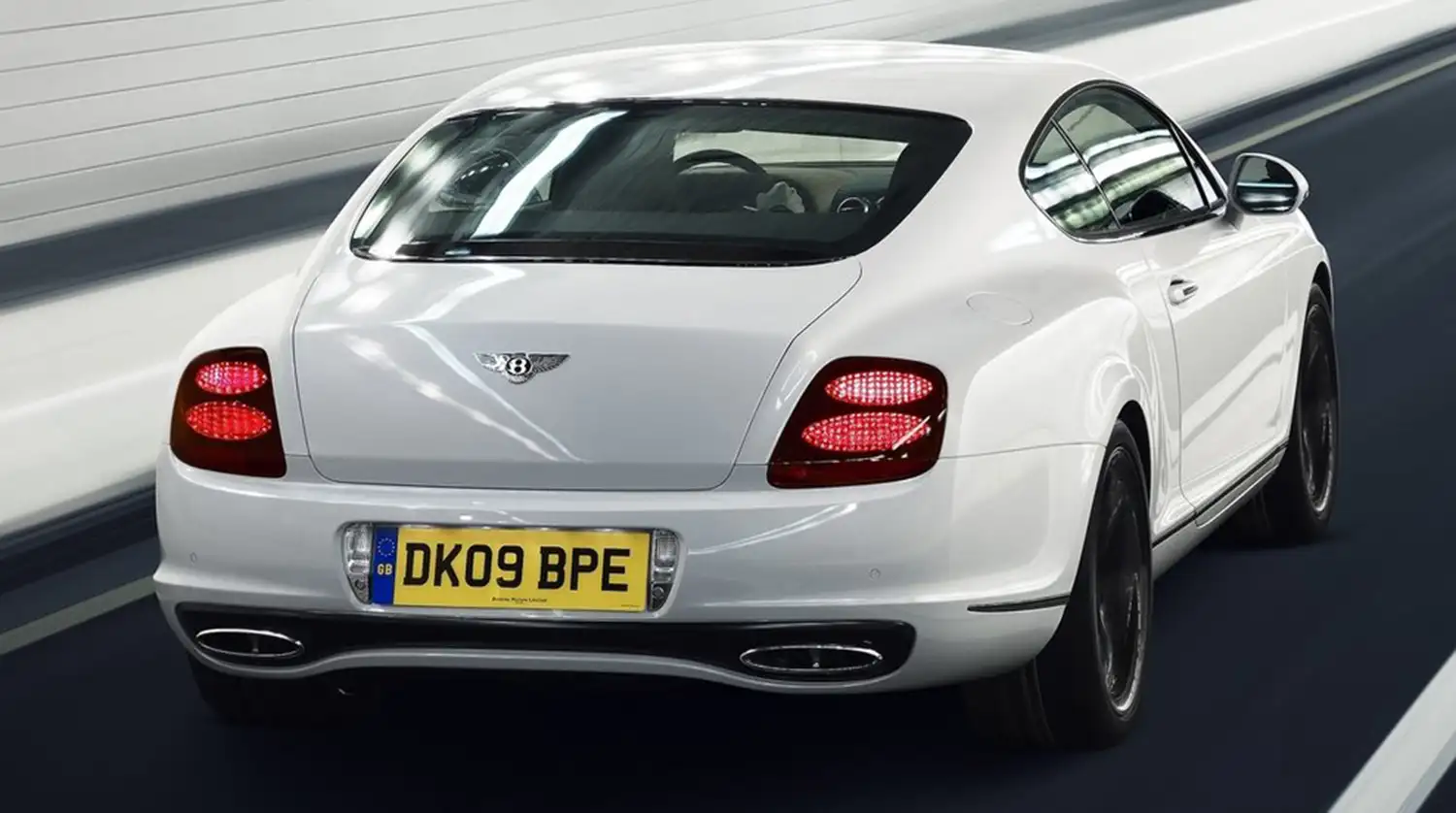
FlexFuel Capability
As part of Bentley’s long-term strategy to reduce emissions, the company was at the time evaluating the use of biofuels. The new Supersports became the first Flex-Fuel Bentley, capable of running on any combination of gasoline and bioethanol with no reduction in power.
Dramatic design
Visually, the Supersports was distinguished by a new front bumper and airdam with a vertical lower air intake at each side. It also featured a new rear bumper, larger oval exhaust trims, an extended spoiler lip and flared wheel arches to cover the 50mm wider rear track. Exterior brightwork was in dark smoked steel, and the model was available in Ice and Quartzite gloss as well as Light and Dark Grey Satin finishes. The two-seater cockpit featured a carbon-fibre cross beam behind a pair of carbon-framed, manually adjustable sports seats. Trim was in carbon fibre and the seats and rear luggage area were trimmed in a combination of leather and Alcantara.
DK12 FZM
The Generation I Supersports in the Heritage Collection is the last model off the line as production ended in 2011. It is finished in Ice with a hide and Alcantara interior trimmed in Beluga with Fireglow accents.
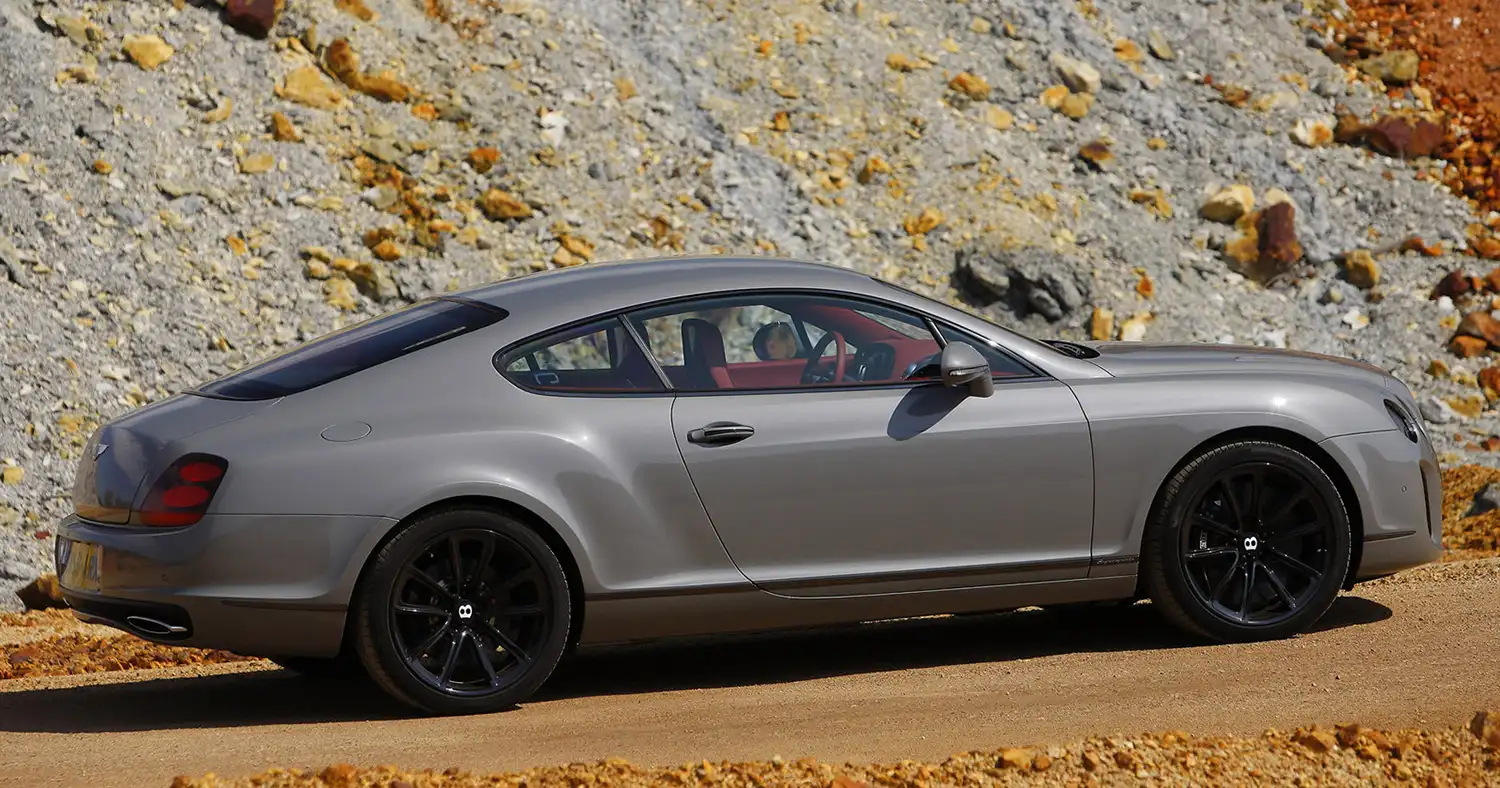
| Date Produced | 2009-2011 |
| Number Built | 1,207 coupés, 583 convertibles |
| Body | Coupé; 2 doors, 2 seats; weight 2,240 kg |
| Engine | 5,998 cc twin-turbocharged W12; direct intercooling; 9.0:1; Port injection; 98 RON unleaded to E85 |
| Power | 621 bhp @ 6,000 rpm, 800 Nm @ 1,700-5,600 rpm |
| Transmission | All-wheel drive 40:60 rear-biased torque split with Torsen T-3 centre differential; Quickshift ZF 6HP26A tiptronic automatic |
| Chassis | Front four-link double wishbones, anti-roll bar; Rear trapezoidal multi-link, anti-roll bar; Self-levelling air suspension, Continuous Damping Control; ZF speed-sensitive Servotronic steering |
| Dimensions | Length 4,804 mm; width 2,194; 1,380 mm |
| Performance | Maximum speed 204 mph (328 kph); 0-100 kph (62 mph) 3.7 sec |
